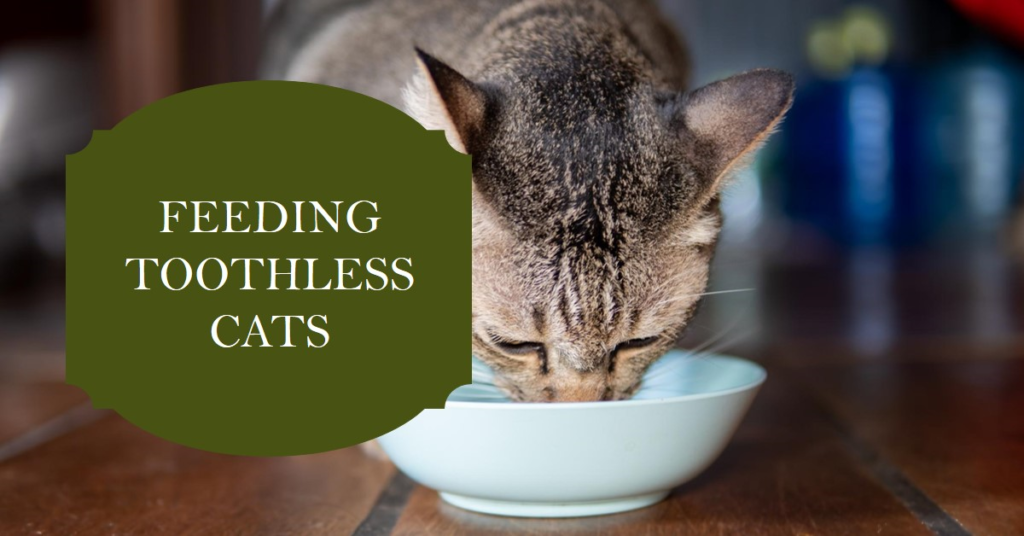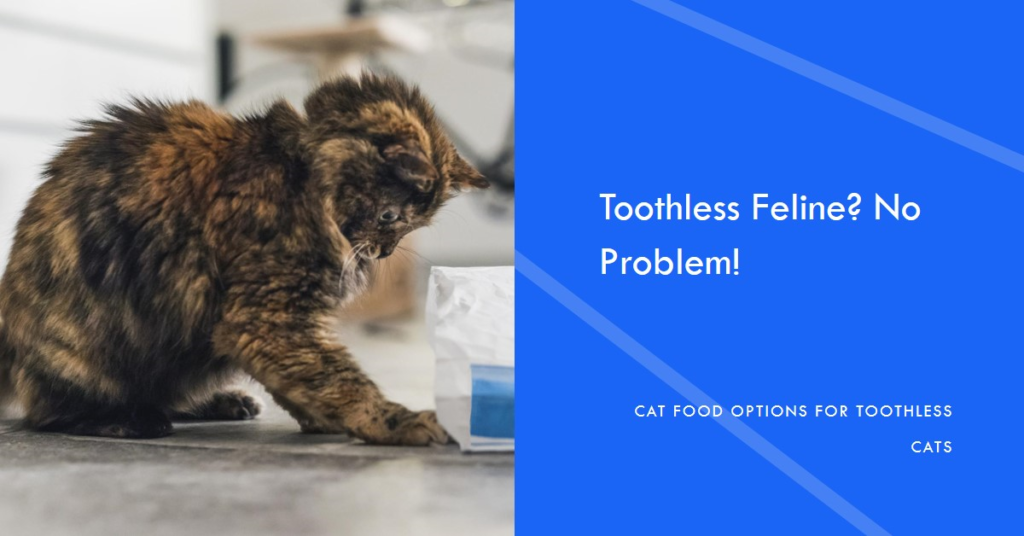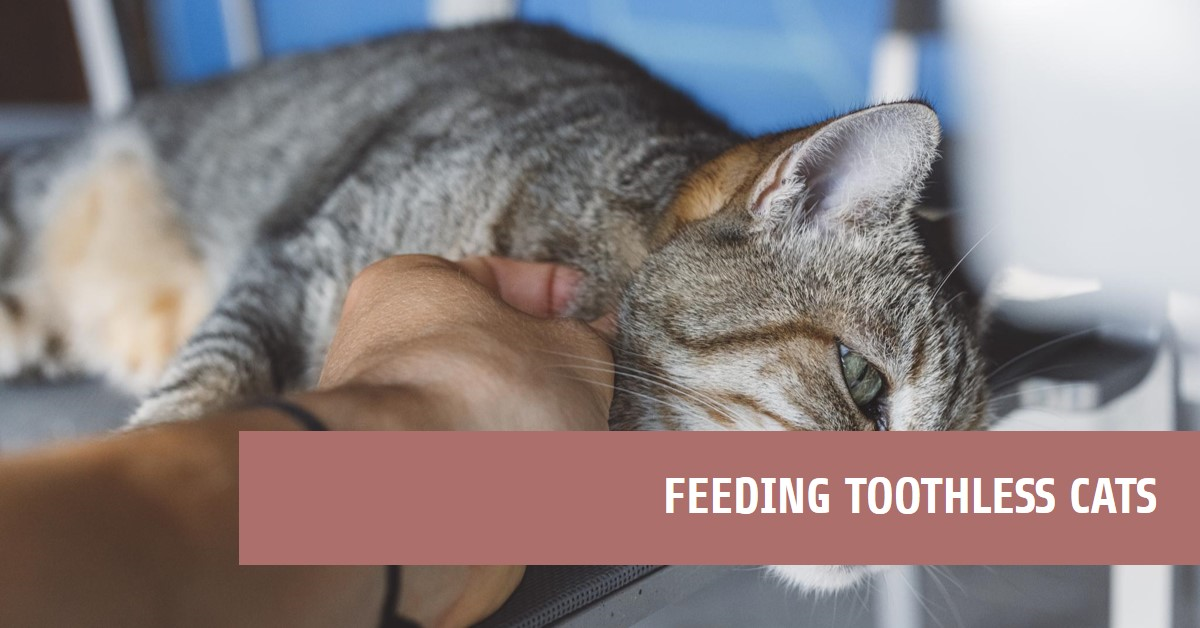Many older cats eventually lose their teeth as they age. While this may seem problematic, some good cat food options work well for toothless felines. In this article, we will explore why teeth are important for cats and discuss the impact of missing teeth on eating. We will also look at various cat food for cats with no teeth and types that can meet the nutritional needs of cats without teeth.
Why Teeth are Crucial for Cats
A cat’s teeth play an important role in eating. They use their teeth to hold and tear meat into bite-sized pieces. They also grind their food with their back teeth. Without teeth, a cat has difficulty chewing their food. Their mouth feels uncomfortable as there is nothing to properly break down pieces of meat or dry kibble. Their gums may be sore from trying to chew without teeth. It can become painful for them to eat. While toothless, they need pre-chopped or pre-cooked food so it is easy for them to eat without chewing.
What Happens When a Cat Has No Teeth—Does it Impact How They Eat?

When a cat loses its teeth, it does affect how they eat. Without teeth to break down pieces of food, toothless cats may try to swallow large chunks of meat or kibble that get stuck in their mouth or throat. This can be dangerous as it could cause choking. They may also avoid eating if it is too difficult or painful.
A cat without teeth needs soft dry food for cats with no teeth that is very soft, moist, and easy to swallow without chewing. The cat food for cats with no teeth should melt in their mouth so they do not need to work to break it down. Their favourite foods from before may now be impossible for them to eat. Special cat food for cats with no teeth makes eating comfortable and safe for ageing kitties who have lost their pearly whites.
What Type of Food or Food Texture Works for Toothless Cats?
Different food textures have been created to work well for cats without teeth. Wet or canned foods are a good option as they are soft, moist, and pre-chopped or minced into small, easy-to-eat pieces. Pate-style wet foods work especially well as they have a smooth texture that does not require chewing.
Some dry cat food for cats with no teeth is also specially formulated to be extra soft and break down quickly in a toothless cat’s mouth without crunchiness. The key is to look for foods labelled “dental” or “for cats with missing teeth” processed or cooked longer to reach an ideal softness.
Dry Food for Toothless Cats
While wet food cats may seem like the obvious choice for toothless kitties, some cats still enjoy dry kibble. Fortunately, there are dental dry food for cats with no teeth that soften quickly when eaten. These are made with larger-sized kibble pieces and undergo extra processing to eliminate crunchiness.
The pieces soften almost instantly in the mouth, turning to mush that can be easily swallowed. Cats still get the bulk and stimulation of eating dry food for cats with no teeth but none of the discomfort from chewing. Many senior cats thrive on dental kibble that meets their dental needs for softness while still providing complete nutrition.
Wet or Canned Food for Toothless Cats
As mentioned, wet or canned foods are the ultimate choice for cats without teeth. Their soft, moist texture melts quickly without chewing. Pate-style wet foods have a smooth, silky texture that requires no effort. Some chunky wet foods for toothless cats are finely minced into small, swallowable pieces.
Canned foods also provide the hydration that many senior kitties need. The extra moisture helps food slip easily down their throat without chewing. Their ingredients contain meat protein and nutrients pre-chopped and ready to eat. Wet food ensures ageing cats with no chompers can still dine comfortably and get ideal nutrition.
The Ideal Nutrition in Food for No-Teeth Felines
When choosing food for cats with no teeth, it must meet their complete daily nutritional needs. Look for foods that provide protein from ingredients like chicken, salmon or beef. They should also contain vitamins A, B12, and K and calcium for bone health.
Omega fatty acids from food sources support skin and coat health. Fibre from vegetables adds digestion-aiding bulk. Senior cats need specific nutrients to maintain overall wellness. Toothless-friendly wet or dry cat food for cats with no teeth tailored to their stage of life provides a balanced diet they can quickly eat without chewing. Complete and balanced is critical for ageing kitties missing their molars.

Cat Food for Old Cats with No Teeth
As cats age, their needs change, in addition to losing teeth. Senior cat food is specially formulated for the wellness of older kitties. It typically has fewer additives, more easily digestible protein, and more calories to slow metabolism. Gently processed wet or dry kibble for toothless elders replenishes nutrients important for senior health.
Look for vitamins, minerals and antioxidants to support immune and joint function. Protein levels are moderate to accommodate ageing organs. Wet food ensures hydration. Complex carbs give slow energy without taxing older systems. With balanced nutrition tailored to their stage of life, ageing cats minus teeth can happily dine.
Why are Senior Cats More Prone to Dental Problems
As cats age, their teeth can develop issues like those of humans. Senior cats 7 years and above are at high risk of dental problems. Their gums may recede as they age or get thin, leaving roots exposed.
This makes gums tender and more likely to bleed. It’s also harder for elderly kitties to chew and clean between teeth. Without regular brushing and dental care, tartar builds up quickly in later life. Tartar leads to infections in gums and mouth pain.
Additionally, older cats’ bodies are more sensitive. Their immune systems weaken with time, so fighting dental infections is tougher. Senior kitties may also have other health issues like diabetes or kidney disease that raise tartar risks.
Their lower activity levels mean less accidental tooth cleaning, too. For all these reasons, senior cats especially need dental-friendly diets and regular vet checks to keep their remaining teeth healthy for as long as possible.
Conclusion
Losing teeth is an unfortunate but common occurrence for ageing cats. However, it does not have to negatively impact a toothless cat’s quality of life or ability to enjoy their meals. This article explored various cat food options that meet the special dietary needs of felines missing their pearly whites.
Toothless kitties can eat comfortably and receive complete nutrition with specially formulated wet foods, dental dry kibbles, and dry food for cats with no teeth for senior cats. With the right soft, easy-to-eat choices, ageing cats no longer have to worry about painful chewing thanks to foods tailor-made. Keeping older cats healthy, happy and well-nourished is possible even without chompers.
FAQs
Q1. Is dry food OK for toothless cats?
A. Some dry foods are specially made very soft. They dissolve quickly without needing teeth.
Q2. Which wet food is best?
A. Paste-style foods are smooth and easy to eat, with no lumps needing teeth.
Q3. What nutrients do they need?
A. Protein, vitamins, calcium and omega fatty acids keep toothless cats solid and healthy.
Q4. How do I know if food is soft enough?
A. Check labels for “dental” or words saying it’s good for cats without teeth.
Q5. How long can cats live without teeth?
A. Cats can live long, happy lives with no teeth. Soft food meets their life needs.
Also Read:
- Printable list of food cats can’t eat : Most Important for Pet owners
- High Calorie Wet Cat Food for Weight Gain


